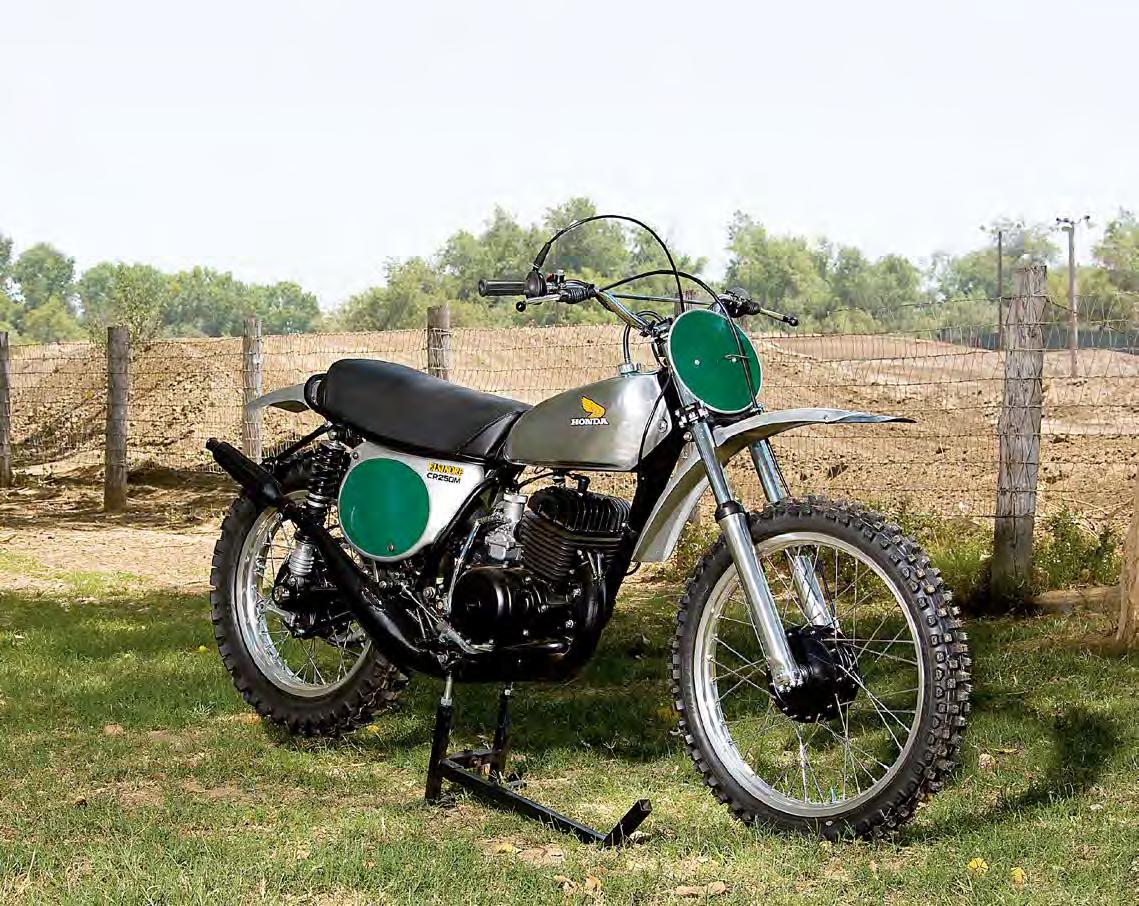
1 minute read
MX ROOTS: THE ELSINORE
1973 The Elsinore
With its ’73 CR250M, Honda launched its first real two-stroke — and kick-started a motocross revolution
By Mitch Boehm
It came out of nowhere, like a South Pacific tsunami wreaking havoc and affecting everything it touched.
It was Honda’s CR250M Elsinore, Soichiro Honda’s first-ever full-sized production two-stroke, and a bike that would rock the motocross landscape for years.
Considering the iconic two-strokes Honda has built over the last five decades, it’s almost amazing to consider that Big Red’s first tiddler was a huge shock. But it was.
The seeds motocross pioneer Edison Dye had planted in the late ’60s were sprouting coast to coast, watered by insatiable American enthusiasm and fueled by rapidly-improving machines — Euro marques such as Husky, CZ and Bultaco, but also by Suzuki’s MXoriented TMs, Yamaha’s do-it-all DT-1 and others. Kawasaki, Yamaha and Suzuki showcased radical works racebikes, but Japan Inc., even after establishing itself as the world’s premier two-wheeled power broker, still hadn’t built a worldclass production motocrosser.
The Elsinore, named after the SoCal town that hosted the famous race memorialized in On Any Sunday, changed all that in an instant. Which was plenty ironic given that Soichiro Honda himself had said, in effect, that his company would never build two-stroke motorcycles.
Introduced in early ’73, the silver and green rocket brought works-level motocross performance to Everyman for just $1,145. Nothing this side of a factory machine could touch it. Producing nearly 30 horsepower and weighing just 212 pounds sans fuel, the 250 Elsinore became an instant winner, offering amateurs and pros alike a powerful, lightweight and durable machine that could compete for moto wins week-in and week-out.
Liberal use of aluminum and magnesium kept it light and maneuverable. Honda engineering — and two years of testing — made it durable and fast. Dealers sold every unit they could get their hands on, magazines spread the word via glowing track tests, and race-result columns in Cycle News provided proof that Honda’s new motocrosser was a force to be reckoned with. Only Yamaha’s ’74 YZ250, which debuted a few months after but was nearly twice the price and built in limited quantities, had the Elsie covered performance-wise.
The Elsinore name may have disappeared in 1982, but the impact of this revolutionary machine lives on.










